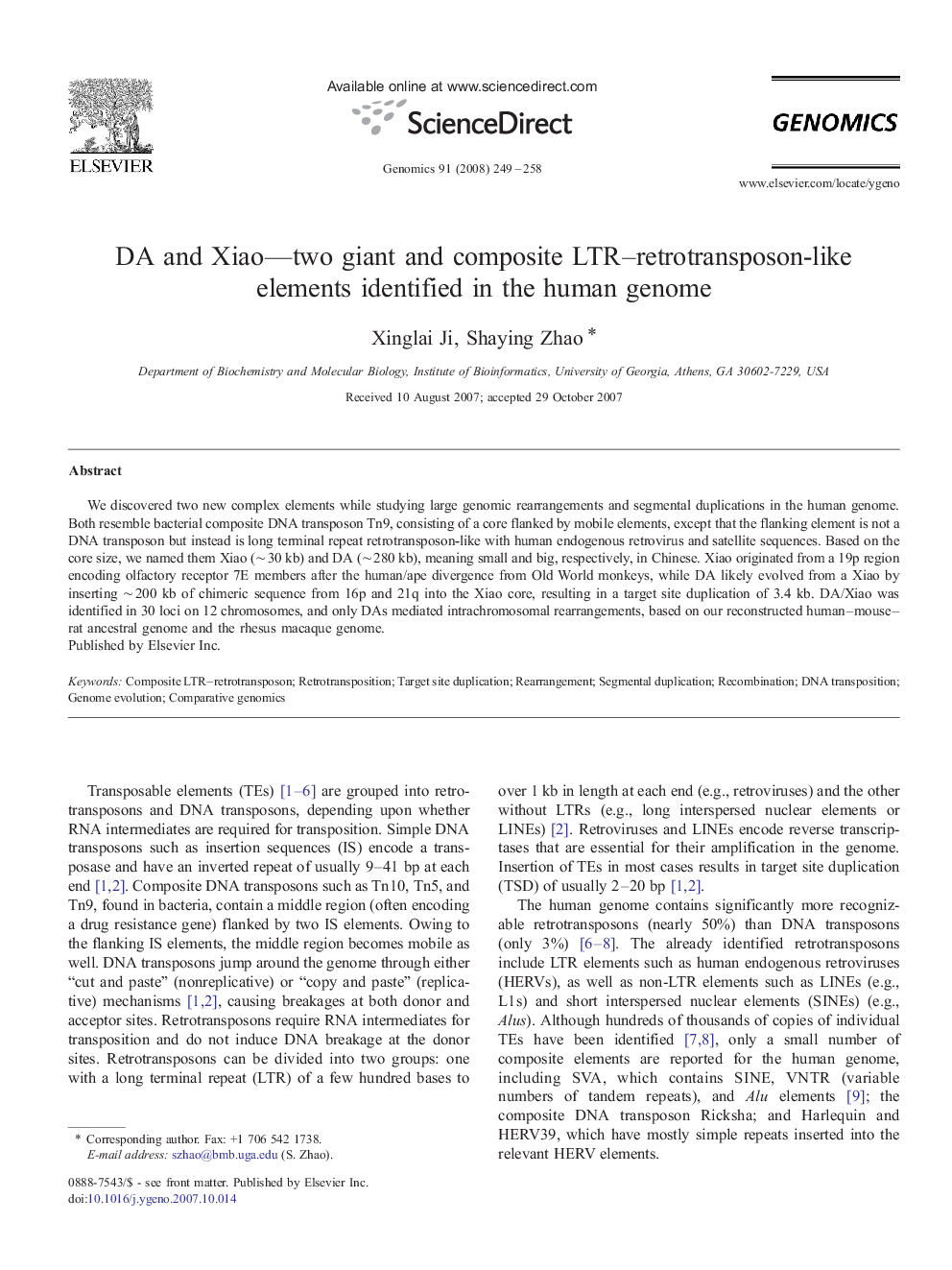| Article ID | Journal | Published Year | Pages | File Type |
|---|---|---|---|---|
| 2820944 | Genomics | 2008 | 10 Pages |
We discovered two new complex elements while studying large genomic rearrangements and segmental duplications in the human genome. Both resemble bacterial composite DNA transposon Tn9, consisting of a core flanked by mobile elements, except that the flanking element is not a DNA transposon but instead is long terminal repeat retrotransposon-like with human endogenous retrovirus and satellite sequences. Based on the core size, we named them Xiao (∼ 30 kb) and DA (∼ 280 kb), meaning small and big, respectively, in Chinese. Xiao originated from a 19p region encoding olfactory receptor 7E members after the human/ape divergence from Old World monkeys, while DA likely evolved from a Xiao by inserting ∼ 200 kb of chimeric sequence from 16p and 21q into the Xiao core, resulting in a target site duplication of 3.4 kb. DA/Xiao was identified in 30 loci on 12 chromosomes, and only DAs mediated intrachromosomal rearrangements, based on our reconstructed human–mouse–rat ancestral genome and the rhesus macaque genome.
